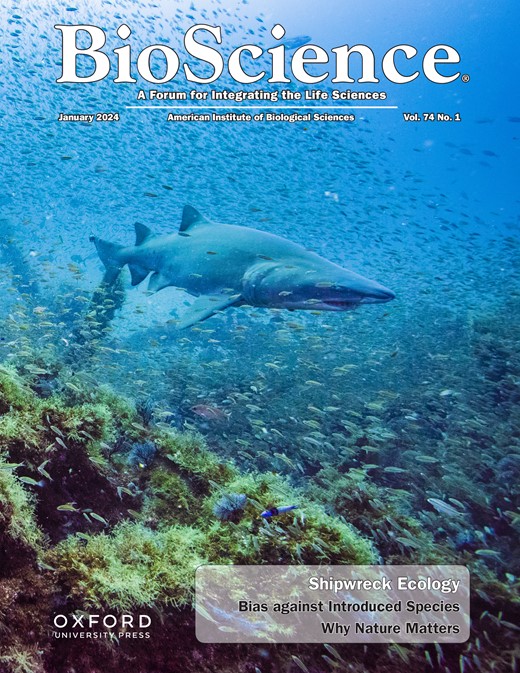作为生物污损标记物的藤壶生物和鳗鲡群的多重排列和引物设计
IF 7.6
1区 生物学
Q1 BIOLOGY
引用次数: 0
摘要
.生物群的生物污损活动造成的影响是安装建筑物出现腐蚀和瘫痪。为了促进生物多样性的安装和稳定,研究人员尝试利用环境样本,在不杀死和分离生物的情况下,将环境 DNA(e-DNA)作为环境样本。本研究旨在获得细胞色素氧化酶 I(COX1)基因的通用特异性引物,该引物可用于识别在硅学中设计的生物污点藤壶群体。本研究使用的序列来自 Amphibalanus amphitrite 线粒体和 Semibalanus balanoides,NCBI 登录号分别为 NC_024525.1|:1-1,551 和 NC_039849|:1-1,551。获得的 COX1 序列以 FASTA 格式保存,以便在使用 Geneious Prime 进行引物设计时进一步使用。在多重比对阶段,使用 Benchling 和 Geneious Prime 确定可持续区域。根据 COX1 A. amphitrite 的最佳特异性引物标准获得的序列长度为 20-22 个碱基,扩增片段大小为 910 bp。正反引物碱基序列分别为 5'-GAGCTGAACTTGGTCAACCG-3' 和 5'GCTCAAAGAAGAGGAGGGCTAT-3'。根据藤壶组 COX1 最佳通用引物标准获得的序列长度为 24 个碱基,扩增片段大小为 1 270 bp。正反引物碱基序列分别为 5'-GACTTCTACCGTTAATGTTAGGAG-3' 和 5'- CTATGGTAATGAGGAGTAGTG-3'。设计结果符合良好引物的要求,因此可将候选引物设计结果用于 PCR 过程。本文章由计算机程序翻译,如有差异,请以英文原文为准。
Multiple Alignment and Primer Design for Groups of Barnacle Organisms and Amphibalanus amphitrite as Biofouling Markers
. The impact caused by biota biofouling activities is the occurrence of corrosiveness and paralysis in installation buildings. To facilitate the installation and stability of biodiversity, researchers try to present environmental DNA (e-DNA) as environmental samples without killing and isolating an organism by utilizing environmental samples. This study aims to obtain a universal and specific primer of the Cytochrome Oxidase I (COX1) gene that can be used to identify biofouling barnacle groups designed in silico. The sequence used in this study was from Amphibalanus amphitrite mitochondria and Semibalanus balanoides with NCBI accession numbers NC_024525.1|:1-1,551 and NC_039849|:1-1,551. The sequence of COX1 sequences obtained was saved in FASTA format for further use in the primer design process using Geneious Prime. The determination of sustainable areas was determined using Benchling and Geneious Prime in the stages of multiple alignment. Sequence with the best specific primer criteria for COX1 A. amphitrite obtained with a length of 20-22 bases and an amplicon size of 910 bp. The sequence of forward and reverse primer bases were 5'-GAGCTGAACTTGGTCAACCG-3' and 5'GCTCAAAGAAGAGGAGGGCTAT-3'. Sequence with best universal primer criteria of the barnacle group for COX1 were obtained with a length of 24 bases each and an amplicon size of 1,270 bp. The sequence of forward and reverse primer bases were 5'-GACTTCTACCGTTAATGTTAGGAG-3' and 5'- CTATGGTAATGAGGAGGAGTAGTG-3'. The design results meet the requirements of a good primer so that the primer candidate design results can be used for the PCR process.
求助全文
通过发布文献求助,成功后即可免费获取论文全文。
去求助
来源期刊

BioScience
生物-生物学
CiteScore
14.10
自引率
2.00%
发文量
109
审稿时长
3 months
期刊介绍:
BioScience is a monthly journal that has been in publication since 1964. It provides readers with authoritative and current overviews of biological research. The journal is peer-reviewed and heavily cited, making it a reliable source for researchers, educators, and students. In addition to research articles, BioScience also covers topics such as biology education, public policy, history, and the fundamental principles of the biological sciences. This makes the content accessible to a wide range of readers. The journal includes professionally written feature articles that explore the latest advancements in biology. It also features discussions on professional issues, book reviews, news about the American Institute of Biological Sciences (AIBS), and columns on policy (Washington Watch) and education (Eye on Education).
 求助内容:
求助内容: 应助结果提醒方式:
应助结果提醒方式:


